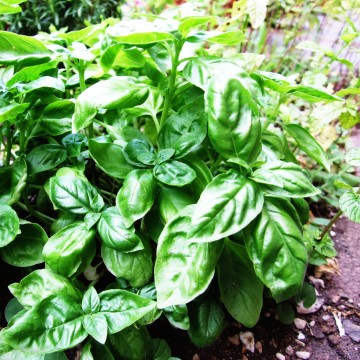Extending the Season: How to Garden All Winter
Wednesday, November 05, 2014

The Sweet Life
If you save your broccoli, lettuce and root crops for fall plantings, you’ll reap a rich reward well into January and February. I have enthusiastically sown broccoli and kale in May, only to be less than impressed by their bitter aftertaste. The beauty of winter crops is that with every frost, vegetables taste sweeter. What magic is this? When the temperatures get cold, the leaves and tubers produce more sugars. This lowers the temperature at which the water in the leaves will freeze, thus allowing them to survive. The veggies live to see another day, and we get to chomp down on sweetened greens in January. While other vegetables would have turned into a sticky pile of green goop, you can grow frost-nipped carrots that actually have a higher sugar content than the cherries and raspberries of Summer.
How and What to Plant
What to plant depends on what you and yours like to eat. Once you scratch the winter soil, you’ll be shocked by the variety of foods we can grow all winter. Read the seed packets to identify frost tolerant varieties. Buy seeds at a local outlet (i.e. not Home Depot) where staff can recommend certain varieties that do well in our area. Edible Portland has a great list of regional seed companies who would be more than happy to send you a catalogue filled with thousands of tempting choices. Stop by Pistils on N Mississippi or Portland Nursery’s two locations on SE Division and SE Stark to pick up Oregon-produced seeds.
Once you’ve picked out what to grow, consider whether the crop should be started in seed trays or directly sown into the soil. Broccoli, kohlrabi, cabbage, collards, cauliflower, mustard greens, Chinese cabbage, escarole, endive, scallions, kale, Brussel sprouts, leeks, bunching onions, and chives should all be transplanted. Delicate greens like spinach, winter lettuces and mâche should be direct seeded, as well as root crops like carrots, parsnips, baby beets, radishes, and turnips. As your summer cucumbers and tomatoes start to slow down, pull the plants and replace them with your transplants. When you plant out your rows, maximize space by alternating root crops with greens like lettuces and spinach. Short crops like arugula can grow under tall crops like leeks or scallions. Don’t forget to poke a few rows of fat garlic cloves into the ground for delicious heads by June and July. Plant garlic from the local farmers’ market instead of from Safeway to ensure they will sprout, as some commercial garlic is sprayed with a chemical to ensure that it won’t form green sprouting tips. Don’t forget to amend the planting hole with a bit of compost and fertilizer; bat guano or chicken manure work great, but my favorite is smelly liquid fish emulsion. Winter crops should be kept well-mulched with leaves or straw insulating the soil to prevent runoff during pounding winter rainstorms. Wait for frozen leaves to defrost in the midday sun before harvesting.
Apartment and small space gardeners can grow lettuces, carrots and beets in containers right outside the kitchen door (or even in a sunny indoor space). Old tires can also be repurposed into small raised beds. The black tires absorb heat from the sun, which keeps the soil inside warm. For more details on cold frames, cloches, and other cold season garden equipment, check out The Year-Round Vegetable Gardener by Niki Jabbour, a home gardener who grows food all year in frigid Nova Scotia.
An urban farmer and master gardener, Amélie Rousseau writes for fellow explorers and eaters of the plant kingdom. It's a jungle out there.




Follow us on Pinterest Google + Facebook Twitter See It Read It